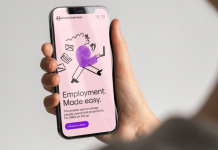By Lim Kee Yeong
 “Thank you, please come again.” A courtesy in business commonly expressed upon completing a sale. This is undoubtedly a satisfying moment to any entrepreneur; what comes next is to search for or serve another customer and the process repeats itself. Depending on the nature of business and sales procedure, customer data may be captured either actively or passively as a natural process.
“Thank you, please come again.” A courtesy in business commonly expressed upon completing a sale. This is undoubtedly a satisfying moment to any entrepreneur; what comes next is to search for or serve another customer and the process repeats itself. Depending on the nature of business and sales procedure, customer data may be captured either actively or passively as a natural process.
The concept of getting the customers to “please come again” is understood universally to play a vital part for any business to thrive. To do so, businesses normally have a wide variety of programs and promotions, including loyalty schemes, service recovery activities, and discounts on the next purchase. All these activities are targeted at getting more or repeat sales from past customers. But have SMEs truly embraced the essence of “please come again” and its fundamentals?
Keep Your Repeat Customers
COVID-19 has caused hardship globally and made SMEs very vulnerable to the coming economic slowdown. While a few SMEs are doing well due to their unique niche and good pivoting efforts, a lot more are struggling to survive.
Under the circumstances, repeat buying has become highly valuable. To survive, some SMEs have dug very deeply into their records to find information of past customers to solicit sales. Regrettably, there are many who cannot do so because of poor record keeping, or no proper mechanics to do.
It has been proven time after time repeat customers are easier to manage, cost less to maintain and represent a ready base to future business. So long as past dealing experiences have been generally satisfying, past customers will likely promote for you, be harder to displease in case of a mistake, be less difficult to convince to come back and probably provide feedback for you to improve.
On the other hand, new customers always carry scepticism as the starting point, need more time to be convinced and compare your products against those they are familiar with. The issue of most SMEs is how to bring their past customers back often and systematically, as well as indirectly tell them to put your products and services as a priority.
Know Your Customer
Beyond the basic appreciation for any sale or “thank you”, SMEs must also act to ensure their customers come back again for more purchases. A key factor to such an effort is to realise where and how to reach these customers. In other words, this is the need to collect relevant information on the customers (subject to applicable laws and regulations governing such activities).
Data misuse is an issue most consumers will be wary of, but assuring customers of future promotions and updates only via non-invasive digital means or mobile channels will be typically agreeable to most. Collecting only email addresses and mobile contact details will likely be a non-issue.
In fact, many customers may proactively ask to be put on the mailing list, chat forums or mass messaging activities if there are offers. The underlying intention of these periodic communication activities, while seemingly advertising in nature, is to create an increased share of mind of your business, during both good and bad times.
In addition to offers and promotions, SMEs can also include other messages of positive intent, such as seeking product feedback, notifying change of business hours, extending festive greetings, or thanking them for a great year.
The art and science of customer communication is another complex topic. For SMEs – just be mindful not to over-do as it may backfire.
Keep Things Simple
SMEs are unlikely to gather, organize and manage customer information in the way Big Data analytics are often talked about globally. So, let’s do the simpler SME Data way. For a start:
- collect limited yet business-relevant customer information consciously (and legally)
- use them regularly (and ethically) for product and service promotions, as well as periodic business messages
- update periodically (and actively) in making the information current.
Customer information should be collected proactively, stored safely, organised effectively into useful information, retrieved easily for use and updated often.
Relevant customer information can be collected at many engagement touch-points. Standard examples by most include through business cards received, purchase orders placed, and payment receipts issued. Another more meaningful way is actively encouraging or incentivising customers to leave contact information via simple means, like a form on Facebook or perhaps good old-fashioned dropping of business cards in-store.
Ways and means of information collection can be made very innovative depending on budget and resources available. However, knowing where and how to collect relevant information is a great start to the long journey of impactful customer engagement.
The challenge is then for SMEs to store and organise the information in a manner that is safe and retrievable. Many tools are available online to serve this “storing and organising” work professionally. Otherwise the use of Excel spreadsheets can be an equally powerful alternative as a low budget option. The key to all these efforts is the ability to retrieve them for regular use and updates.
More Than Just ‘Thank You’
The economic situation inflicted by the COVID-19 pandemic has further amplified the need for repeat sales, given that the ability to secure new customers may be affected by movement restrictions or reduced commercial activity. Hence, knowing how and where to reach past customers will certainly come in handy.
In a nutshell, do more than just saying “thank you, please come again”. SMEs have to step up their game into collecting relevant customer information consciously (but legally and ethically) and use them regularly for customer engagement purposes to improve the chances of captive repeat sales. Support from past customers is always welcome and incredibly helpful when faced with a situation like COVID-19 to keep any business going, especially SMEs.
Lim Kee Yeong is Director of SME Banking at Affinbank.
























